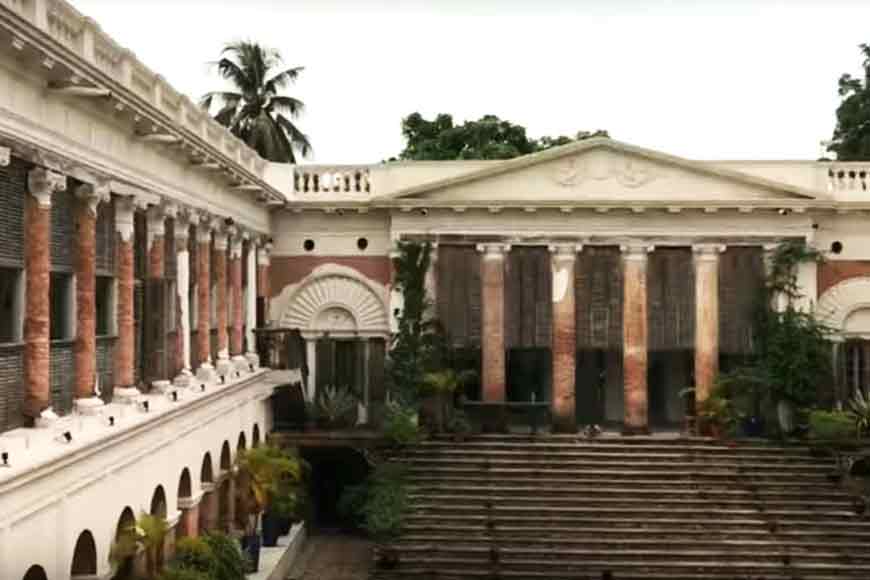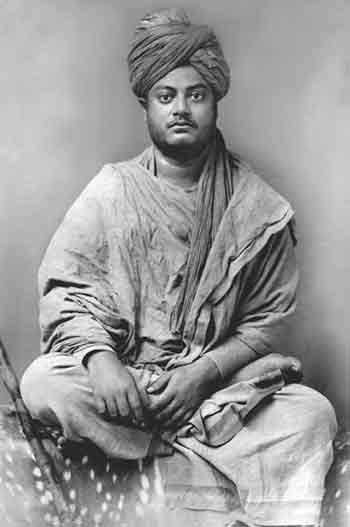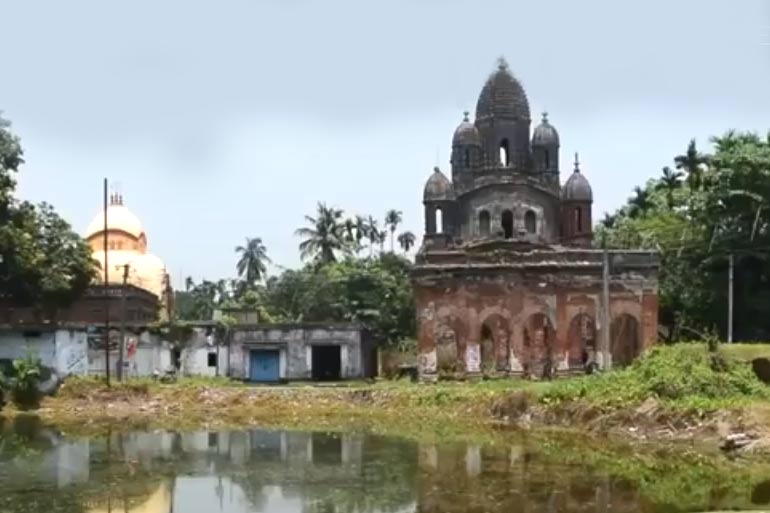Swami Vivekananda’s homecoming from Chicago and the Bawalis of Budge Budge

Budge Budge is an ancient settlement in South 24 Parganas. Not much research has been done about its rich heritage which has witnessed some of the most fascinating events of Indian history including the homecoming of Swami Vivekananda from his Chicago visit in 1897. He landed at Budge Budge Ferry Ghat and boarded the train to Kolkata from the old station.
 Long ago, the Ganga-Bhagirathi River bifurcated at Triveni near Bandel into three broad streams: Saraswati headed in the south-west direction passing by Saptagram, Budge Budge, Falta and Diamond Harbor to reach the confluence of Bay of Bengal. Yamuna moved in the south-east direction. This Yamuna is not the same as the one we see in north India and Bangladesh. In between Saraswati and Yamuna River, the Hooghly River meandered its way. Adi Ganga, also known as Gobindapur Creek, Surman’s Nullah and Tolly’s Nullah, was the main flow of the Hooghly River from the 15th-17th century but now it is no more than a sewer.
Long ago, the Ganga-Bhagirathi River bifurcated at Triveni near Bandel into three broad streams: Saraswati headed in the south-west direction passing by Saptagram, Budge Budge, Falta and Diamond Harbor to reach the confluence of Bay of Bengal. Yamuna moved in the south-east direction. This Yamuna is not the same as the one we see in north India and Bangladesh. In between Saraswati and Yamuna River, the Hooghly River meandered its way. Adi Ganga, also known as Gobindapur Creek, Surman’s Nullah and Tolly’s Nullah, was the main flow of the Hooghly River from the 15th-17th century but now it is no more than a sewer.
Budge Budge was once part of the dense Sundarban forests. The area was later cleared for human settlement but not much has been done to trace its rich and varied history. The Bawali Palace (Rajbari) stands erect for centuries, silently witnessing the changing face of time. Budge Budge railway station is 33.4 kilometers away from Kolkata. The Bawali Palace is quite close to the station and a short rickshaw ride from the station.
The origin of the name “Bawali” can be traced to a local tribe of the same name who lived in this region around 500 years ago. They depended on the jungles for their sustenance and were engaged in fishing and collecting wood and honey from the forests. They worshipped Dakshin Roy, the lord of the jungles and Bonbibi, their divine protector. Another folklore attributes the name to some Bawali Fakir who lived in one of the villages.
Sometime during the end of 16th century and early 17th century, Basudeb Ram Rai, an efficient man who worked under Man Singh in the Mughal court of Emperor Akbar, was made a prominent official. He was bestowed the title of Mandal and was given the Zamindari of three lakh acres of land in Bengal. Although he hailed from Uttar Pradesh, Basudev’s grandson, Shovaram, was awarded the title Mondal. Shovaram’s grandson, Rajaram was the army commander of the ruler of Hijli. Rajaram impressed the king with his bravery who offered him the zamindari rights over 50 villages, including Bowali and Budge Budge.

His descendant, Harananda Mondal, consolidated the family’s position in the area with effective land reforms and trade partnerships with the British. The Bawali Zamindari flourished during his time and soon the Mandals became a name to reckon with amongst the Zamindars of Bengal. The Mandals were devotees of Lord Krishna and after consolidating their zamindari , they turned their attention to building temples. Within a span of 70 years, a number of exquisite temples were built in and around Bawali. These temples are some of the finest representative pieces of the Bengal style of architecture. These include the Gopinath Jiu Temple built in 1794 with its nine-domes (Navratna) adorned with terracotta murals, the Radhakanta Jiu Temple (1796), the Radhaballav Jiu temple (1813) and the Shyamsundar Temple (1863). The Mandals had a keen eye for the welfare of their subjects and built a number of Rash Mancha, palaces, Jal Mahals, Dol Mancha and Nat Mandir during this era.
Though most of these majestic temples are in ruins today, Bawali still hosts a 300-year old Rath Yatra that was initiated by Manickchandra Mondal and the 200-year old Kalipuja, Charak and Goshto Yatra. The Bawali Rajbari has been now been turned into a luxury heritage resort near Kolkata and is fast gaining popularity.

-Scheme-during-Rabi-2025-26--Agriculture.jpg)







